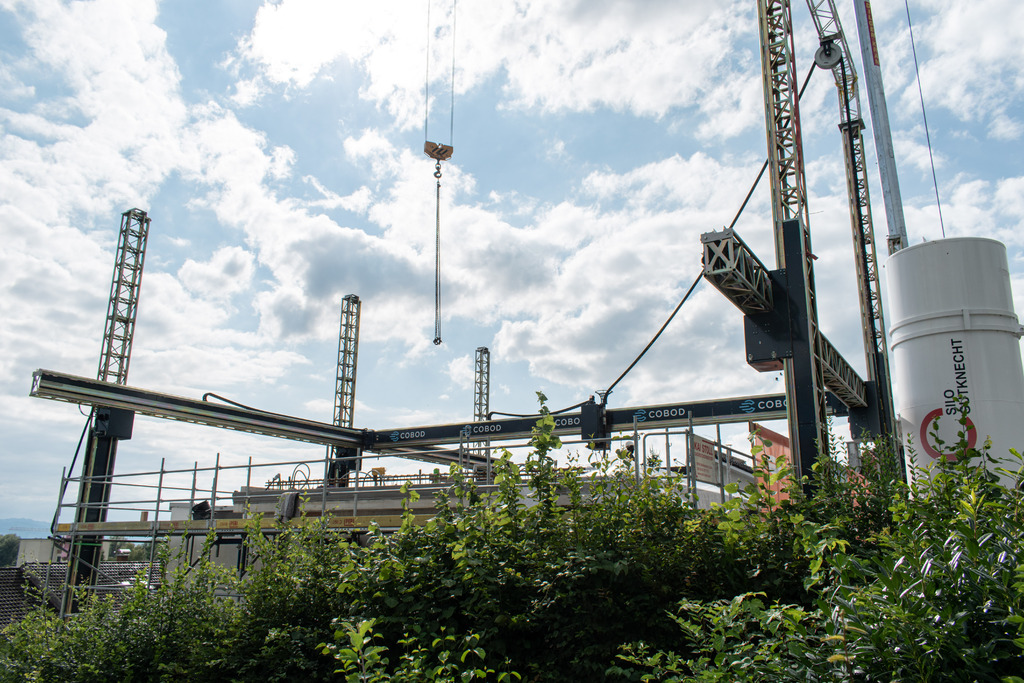A next step in the development of 3D construction printing technology can currently be seen in Lindau, Bavaria. The Peri 3D construction printing team is realizing a residential building extension. Based on an idea and planning by the architectural office Bodensee Architektur, a new floor is being printed onto an existing single-family house and implemented with Baldauf Gebäudedruck.
"Once again, we are entering new territory here with our 3D construction printing technology," says Dr. Fabian Meyer-Broetz, Head of Peri's 3D construction printing activities. "Technologically, the setup of the printer in particular was a new challenge due to the slope of the site. The project in Lindau shows once again how flexible and versatile this new technology is."
The house, which was built in 1960, is occupied by the planning architect André Baldauf and his family. "The most important topics of our time are the careful use of our earth and the digitalization of all areas. The building industry has few answers to these so far," says André Baldauf. "Due to the mix of materials used in our project - of highly CO2-binding Neptune grass insulation, a folding wooden roof and 3D printed load-bearing structure - we were able to construct the building extension in a nearly CO2-neutral way without focusing on just one building material. The walls were planned and printed in 3D, and the wooden roof was tied down ready for assembly according to 3D plans. That's how we plan and build today!"

First, the old roof was removed and a new concrete ceiling was placed on top of the existing structure, onto which the new floor could then be printed. After completion, the new floor will have a floor area of 120 sqm and a height of 3.70 m.
As with the successful printing projects for the residential buildings in Beckum (North Rhine-Westphalia), Wallenhausen (Bavaria) and Tempe (Arizona, USA), Peri is using the Cobod Bod2 gantry printer for the residential building extension in Lindau.

With this technology, the print head moves over three axes on a permanently installed metal frame. The advantage: The printer can move to any position within the construction and only needs to be calibrated once. The Bod2 is certified in such a way that work can also be carried out in the print room during the printing process. Manual work, such as laying empty pipes and connections, can be easily integrated into the printing process in this way. With a speed of 1 m/s, the Bod2 is currently one of the fastest 3D construction printers on the market.
The "i.tech 3D" material used for printing was developed by HeidelbergCement specifically for 3D printing. Its properties are adapted to the special requirements of 3D printing with concrete, and it harmonizes very well with the Bod2.